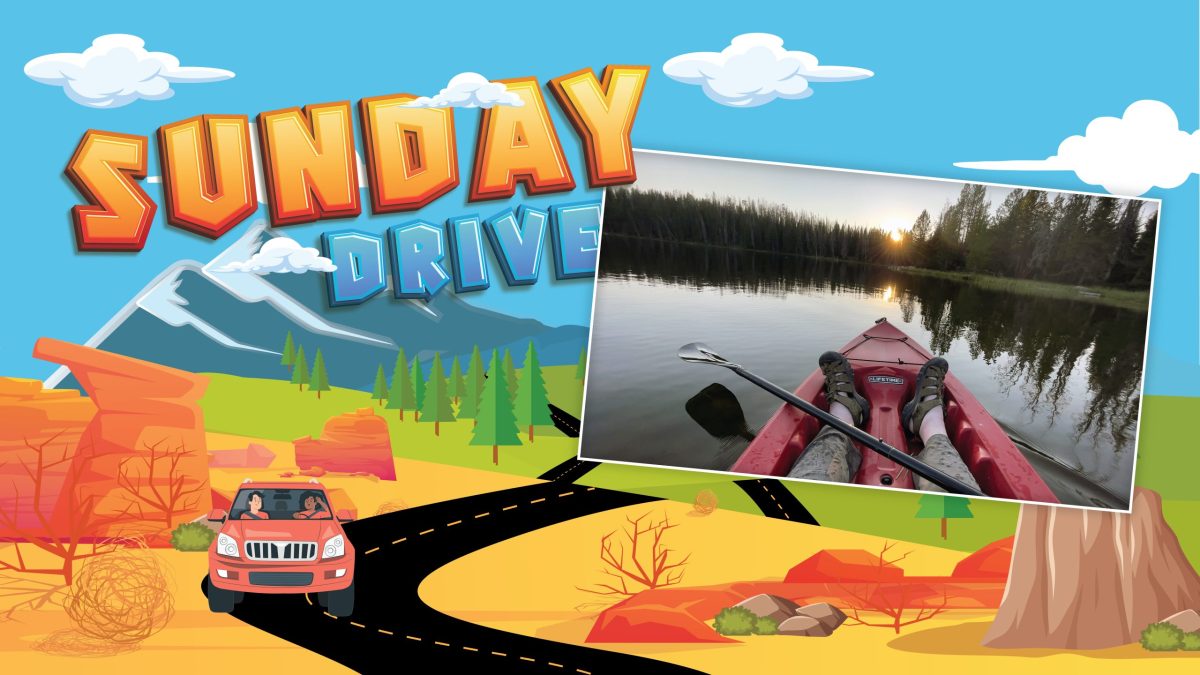It was a warm, overcast evening on a quiet lake in the Uinta-Wasatch-Cache National Forest. Peaceful. Tranquil. Gliding along the surface, I dipped my paddle into the still water as fish popped up to the surface all around me.
Teapot Lake has long been a great little getaway spot for us — perfect for a picnic, paddle, or hike, and just half an hour from Kamas, the gateway to the Uintas. Sitting right on the Mirror Lake Highway, it’s nestled against Lilly Lake, across the highway from Lost Lake.
Carole put out the picnic spread while I strong armed the kayak off the roof of the car, sliding it down to the lake. Kayak, check. Seat back, check. Paddle, check. Life vest, check.
A cheese plate and some homemade beef stew made for a wonderful dinner, capped off with our nightly game of backgammon. Now it was time to hit the water while Carole headed out to circumnavigate the lake.
There’s something very peaceful about paddling a kayak on a mountain lake. The water had small ripples massaging the mirror-like surface. A cloud bank tamed the golden-hour light. To the east, Bald Mountain stood proudly with her big, broad shoulders bared to the elements.
Just two miles to the north, the 11,000-foot peaks of Mt. Watson and Notch Mountain stood out in the sky, forming The Notch between them.
There are over 1,000 lakes in the Uintas, most of them natural formations like the 70-acre Teapot Lake, formed by glacial deposits 50 million years ago. Our ability to enjoy them today goes back to President Theodore Roosevelt and the U.S. Congress from 1906 to 1908 protecting the region as national forests.
It was a seemingly busy night on the lake with two or three other kayaks. Fishing lines casting for trout whirred in the air, resulting in light splashes into the water.
I paddled down to the southwestern shore, where hundreds of pond lilies were bursting out with yellow flowers. Up atop a towering pine tree, an osprey nest is waiting for its occupant. At an elevation of nearly 10,000 feet, it’s one of the highest nesting areas for osprey in the state.
I waved to Carole on the trail by a small inlet projecting towards Lilly Lake, paddling over to some 18-inch treefalls in the water.
Along the shoreline hiking trail, wildflowers were in full bloom. Wandering daisies with their bright yellow heads and purple petals dotted the trail. Pretty little yarrow, their bright white crowns stood out distinctly against the lush mountain greenery, springing up along the pathway. White chickweed, and so many more, outlined the mile-long hiking trail along the lake.
All of a sudden out of nowhere came a 10-year-old boy with the biggest smile of his life, proudly displaying a whopper of a 6-inch rainbow trout. It may not have been trophy size, but its brilliant rainbow colors made it quite a catch for the young angler.
I watched the sun set over the western shoreline. Temperatures started to drop as I paddled towards the shoreline, feeling blessed to have this amazing natural resource in our own backyard.
DETAILS
Getting there: Just head up S.R. 150, the Mirror Lake Highway, about 26 miles from Kamas. Be advised that there is no cell coverage past Kamas.
Dining: This is a picnic spot, so bring your dinner or stop in Kamas at King’s Tacos. The Notch is a great stop on the way home.
When to go: This is a wonderful Sunday Drive, though weekends are busy. We love this spot for a weeknight getaway.
What to do: It’s easy to put in a kayak or canoe, and it’s just a one-mile hike on a flat trail that encircles the lake. Teapot Lake can be a simple destination or combined it with a more comprehensive visit to the lakes of the Mirror Lake Highway. If you are planning to paddle, make sure to take the 2024 mussel-aware certification and have a copy in your car. You’ll also need a Mirror Lake Highway recreation pass, available at a highway kiosk.

